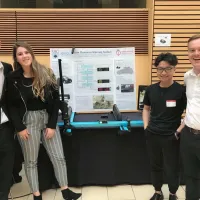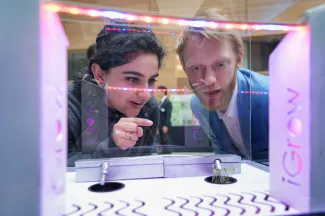
Cynric Li
- Degree:
- Bachelor of Applied Science
- Grad year: 2021
- Program:
- Campus: Vancouver
Job: Electrical Software Cabin Systems Integration Engineer, Bombardier
Cynric Li loved the project-focused nature of Integrated Engineering and being able to work on real-world, student-directed projects with his classmates in each year of the program. He’s now a systems integration engineer for Bombardier, where he designs and integrates technology for the aircraft cabin management systems of business jets.
Any highlights from your time at UBC?
For one of our projects in third year, my team worked with the car share company EVO to design a low clearance warning system so that an alert would sound if people had bikes or other tall objects on their roof rack and were heading into a low clearance area.

From second through fourth year I had a Work Learn position with UBC’s Information Technology Learning Space, making sure software was updated, supporting professors and others with technical issues, making sure AV equipment was working and other duties.
I also worked at BMW as a software engineering project intern for BMW Group in their IT department. It was more of the software and programming side, but it gave me some good experience and insights into the automative industry.
What’s a typical day look like?
There are always challenges! My day is very dynamic and I work with many other department within the company – including other program, project, airworthiness and flammability teams. On the technical side, we need to make sure the parts are integrated, verified and tested, and on the business side, we need to take into account commercial perspectives and considerations.
Any advice for new students?
Choose integrated engineering—it’s a very rewarding program!
I encourage students to try and identify what it is you’re really interested in. You don’t need to know this right away. But by trying out different projects, pursuing a range of experiences, talking to upper-year students, alumni and profs, you will have a sense of what appeals to you and what your strengths are so that you can plan out your time at university.
This also extends to figuring out if you are more interested in a job in research or in industry. I was always more interested in professional perspectives and solving challenges faced by industry, which is why I did the MEng. But a good friend was more keen on research, so she did a research-focused MASc and is now doing her PhD. UBC offers a lot of options that will set up whatever path you choose.






